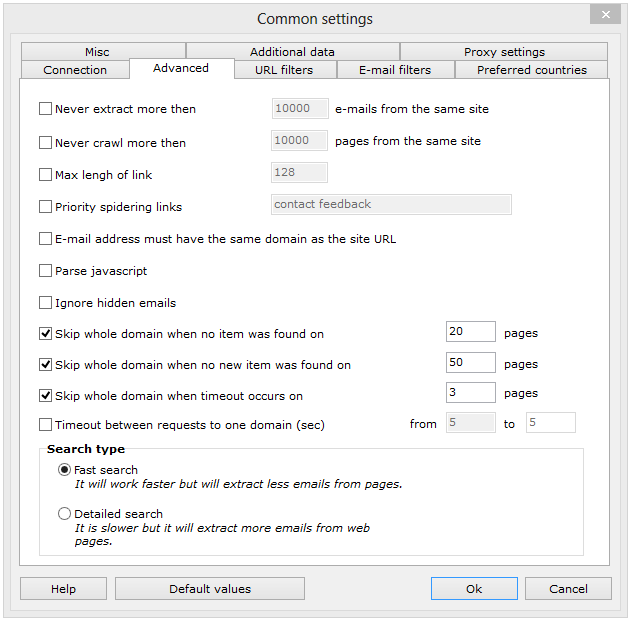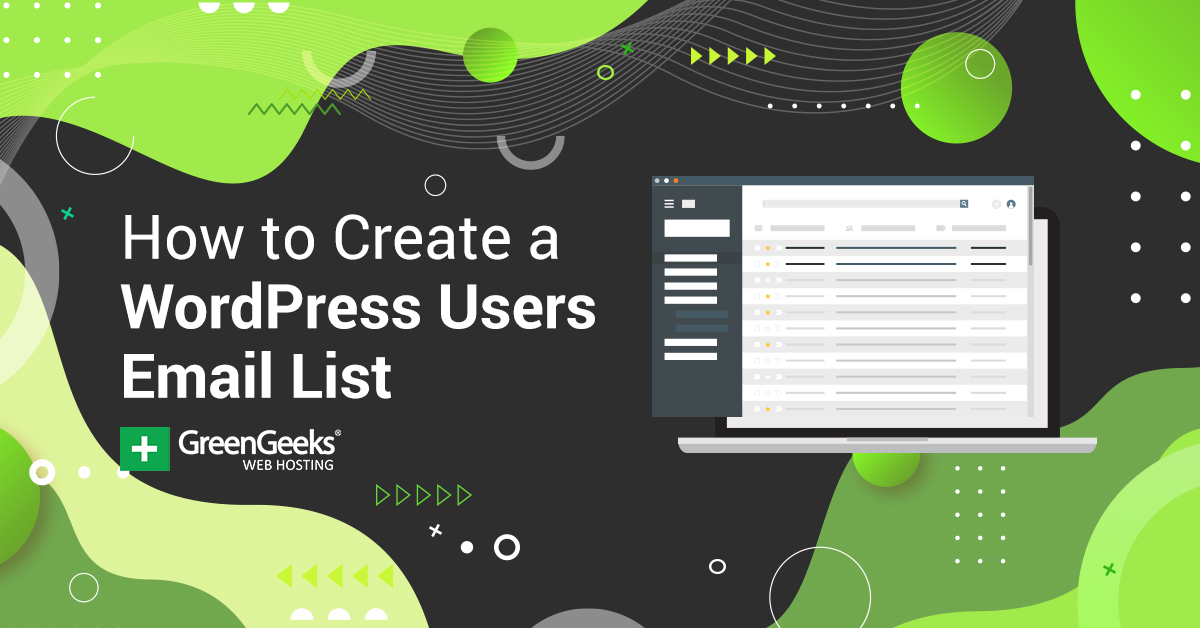Best Info On Deciding On An Email List Site
Wiki Article
What Should I Look Into Prior To Buying An Email List Of Hematologists?
To get the most effective outcomes, you need to take into consideration several factors. These include whether or not the list will be accurate, legal, and pertinent to your marketing objectives. Here are some key considerations. Data quality and accuracy
Source of information: Check the provider's use of reliable sources like professional directories, databases or verified opt-ins from hematologists. The quality of the list is determined by the accuracy with which contacts were taken.
Verification and Updates: Ask your service provider about its data verification and updating process. Validate emails to remove invalid or inactive addresses. Updates are required to keep the database up-to-date when healthcare professionals switch positions or even institutions.
Segmentation of the List The list needs to be segmented according to subspecialties (e.g. pediatric oncology or hematology), years of experience and hospital affiliation. Segmented lists allow you to better tailor your efforts.
2. Legal Regulations
Data Privacy Laws : Ensure that your list is in compliance with all relevant laws on data privacy including the California Consumer Privacy Act, General Data Protection Regulation, in Europe or the General Data Protection Regulation, in the U.S. That means email addresses are only collected once consent has been granted.
CAN-SPAM Act : In the U.S.A. ensure your list conforms to the CANSPAM Act that governs commercial emails. Failure to comply could result in fines and your emails could be flagged for spam.
Opt-in Consent: The opt-in list should consist of doctors who have specifically agreed to receive emails from third parties. Unsolicited emails sent to patients who haven't signed up could result in unsatisfactory engagement or legal issues.
3. Provider Reputation
Find out about the reputation and track record of the list provider. To ensure that the company is reliable, look for reviews, testimonials and case studies. A reputable company that has a history of delivering top-quality and accurate information is more likely.
Transparency: Pick a company that is transparent about where and how the data was collected. It is best to avoid providers that are unclear or unclear in their collection practices.
Customer Service: You should choose a service provider that provides excellent customer service. Support is vital if have issues with your technical setup or if you need to modify your list, or have compliance questions.
4. Cost and Return on Investement (ROI).
Pricing Model: Examine the pricing structure that is offered, such as pay-per-contact or flat fee. Check that the price is aligned with the potential ROI. The quality of the list should be balanced and volume with your budget.
The Refund and Replacement Policy. Most reliable providers will offer a refund or a replacement policy if the email address is invalid or has expired. Be sure to read the details of this policy prior to making an order.
Value for money: Check the features on the lists (such as segmentation and the accuracy of the data provided by the service provider) with the price. The list with the lowest price may not necessarily provide the best value if the quality of the data is poor.
5. Use and ownership of data
Single Use Vs. Multiple Use: Make certain to read the conditions for making use of the email list. You might be able to use the email list for a single campaign with some service providers, while others allow unlimited usage.
Exclusive vs. Shared Lists. Determine if an email list belongs to you alone or is shared with other buyers. Exclusive lists tend to offer more engagement since people on the list are less likely to have received marketing emails from many sources.
6. Data Integration and Format
The list of items is compatible with CRM or email tools: Check if the list can be easily incorporated into your CRM platforms or email marketing platforms. The list should be accessible in common formats such as CSV or Excel to ensure seamless integration.
Simple of Use: Examine how easy it is to filter and manage your list. Lists that are hard to manage and segment could hinder the effectiveness of campaigns.
7. Ethical Questions
Relevance for Hematologists: Make sure that your email outreach is appropriate to hematologists. Not sending content relevant to their expertise can harm your brand's image and result in poor engagement.
Avoiding Spam Practices: Be mindful not to bombard recipients with too many messages. Sending out too many emails could harm the reputation of your email sender.
The conclusion of the article is:
The purchasing of a hematologist's list is an effective tool for targeted marketing. But, it should be handled with care. To ensure you're getting a list with high quality and accuracy, you should focus on the accuracy of the data as well as the conformity with privacy laws, and the reputation and track record of the vendor. By prioritizing segmentation, legal compliance, and ethical marketing you can increase your return on investment and keep a positive brand reputation in your outreach initiatives. See the best hematologists email list for website recommendations.

What To Look Out For When Purchasing An Email Database Within The Oil And Gas Industry
When purchasing an email list for the oil and gas industry it is important to take into consideration a variety of aspects to ensure that the list is top-quality specific, specialized and legally compliant. Here are 10 important items to be aware of:
1. Relevance of Target Audience
Focus on industries: Ensure the list of email addresses is geared towards the oil and gas industry. An organized email list should include professionals including engineers and geologists. operations managers and decision-makers from downstream, upstream, and midstream operations.
Job Titles and Roles: Find a list of the top decision-makers (executives engineers, managers, executives and so on.) within the organizations you would like to be targeting.
2. List Source and Vendor Reputation
Reputable suppliers: Only purchase from reliable and trustworthy email list providers that adhere to the best practices in data collection. Avoid sources of doubtful origins because they could lead to unreliable data or legal problems.
Data Quality: Conduct research or ask for testimonials to determine the data provider's quality.
3. Data Accuracy and Quality and Freshness
Data Age: This list should include the most up-to-date contact information. Oil and gas companies often undergo staff change. Contacts that are older could result in an increased bounce rate.
Verification Procedure. Make sure that the vendor verifies and regularly updates its database to get rid of inactive or inaccurate contacts.
4. Compliance with Regulations
Legal Compliance: Ensure that the list of users is in compliance with local and global regulations such as GDPR, Can-SPAM, and others which govern the usage of personal information. Non-compliance can lead to criminal penalties or legal risk.
Opt-in Process: Check whether the email address listed on the list was collected with the consent of the recipients, i.e. they've chosen to receive emails.
5. Segmentation and Customization
Custom Segmentation. A reputable list service must offer segmentation options according to specific factors like size of the company or location, as well as job function.
Custom Filters Based on your campaign objectives you can customize the list according to criteria such as geographic area or size of the business, or your particular needs.
6. Deliverability Rate
High Deliverability Rates: A good list of email addresses should have high levels of deliverability (normally 95%). Lists with poor quality typically have a high bounce rate which can hurt the reputation of your sender and their email marketing efforts.
Ask for historical data or metrics on deliverability to determine the success of an itemized list.
7. Volume vs. quality
Quality over Quantity. Make sure the list you create is not only large but also precise and focused. A more compact and quality list is more efficient than a general, broad one.
Engagement Metrics: Prioritize engagement rates over contacts, as an engaged audience is more likely to react to your campaigns.
8. Cost Structure and Pricing
Transparent Pricing is transparent. Learn the structure of pricing. Beware of lists that have extremely low prices, as they might not provide quality or worth for money.
Return on Investment (ROI), compare costs of the list against the expected conversion rates. Sometimes, paying more for a targeted list can save you money at the final.
9. Privacy and security of data
Check that the seller follows strict practices for protecting data. The list provider should ensure that all personal information is protected from entry by anyone else.
Confidentiality. Check that the company is not going to sell or share your information. Particularly, if your business requires confidentiality and discretion.
10. Customer Support and after Sales Service
You are able to reach the vendor for ongoing support for assistance with your list, or if you have any issues.
List Replacement Guarantee: If there are any of problems with the list (e.g., incorrect data or undeliverable), a good provider will offer the option of a replacement or a refund.
Be aware of these aspects to ensure that you are buying an oil and gas list of email addresses that is effective, compliant and aligned to your business goals. Have a look at the top oil and gas industry email list for blog guide.
